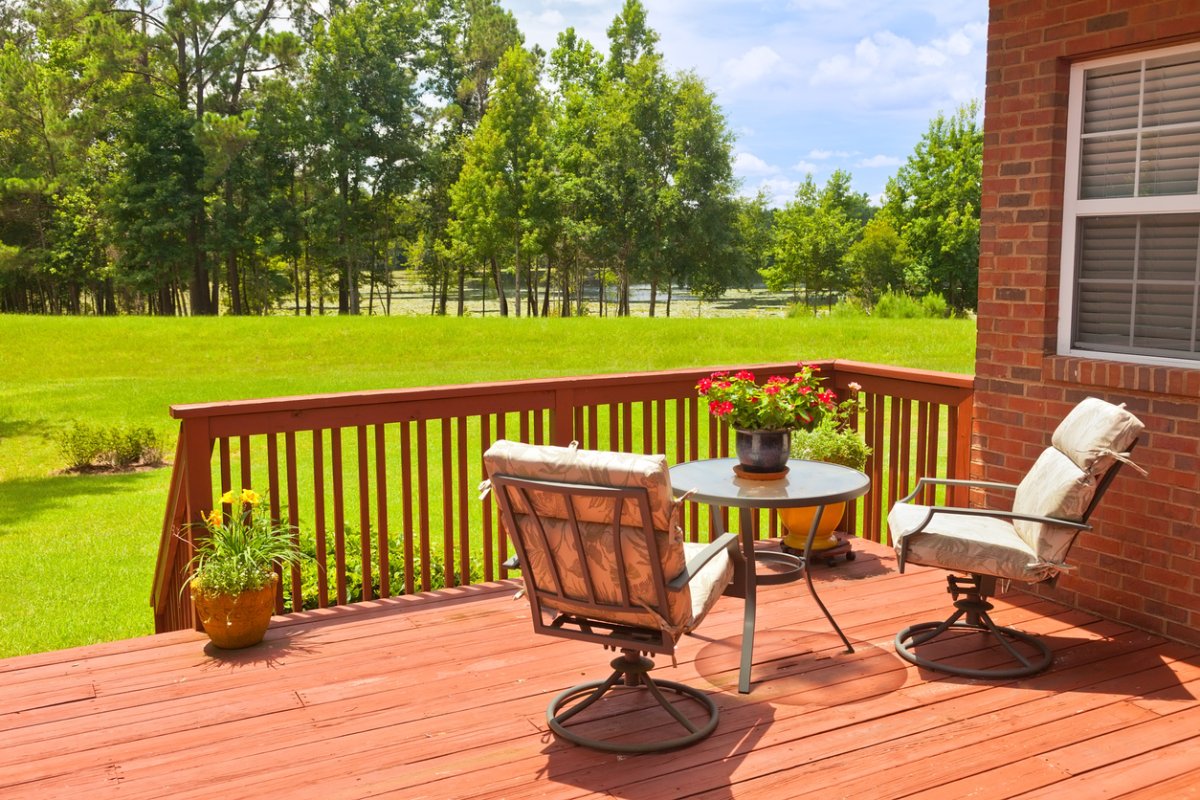

We may earn revenue from the products available on this page and participate in affiliate programs. Learn More ›
According to the North American Deck and Railing Association (NADRA), more than 50 million homes have outdoor decks, and about 30 million of them are past their peak and need to be replaced or repaired. So, before you begin entertaining outdoors this season, be sure to check your deck (or have it professionally inspected) and take care of any problems. Continue reading for a slew of helpful tips to keep in mind as you evaluate and repair your outdoor deck—or even build a new one.
RELATED: The Dos and Don’ts of Deck Maintenance
Is the wood too soft?
If the wood of your deck is soft, it has probably rotted and may be unsafe to walk on. According to Michigan-based Zeeland Lumber, you can check for rot by tapping on potential trouble areas of the deck with a screwdriver. If the wood feels soft and your taps sound like “mushy thuds,” you’re probably dealing with rot. As long as the rest of the deck is in good shape, you can just repair the boards that have rotted.
Don’t fall!
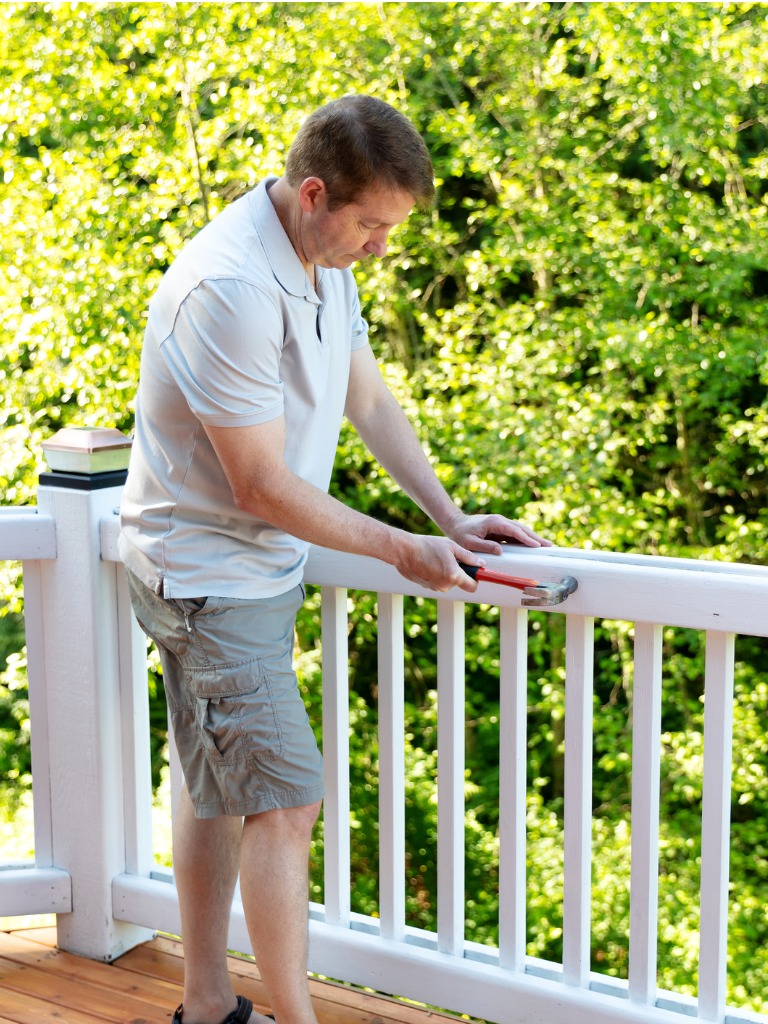
Who has never worried that a railing might give way and cause someone to fall off the deck? It’s a scary thought, but you can make sure it never happens by checking the railings frequently and securing them at the first sign of weakness. The higher the deck is from the ground, the sturdier the railings should be. If the railings are shaky, that’s often a sign that they need repair. When you notice a wobbly railing, first confirm that it doesn’t have any rotting issues. If the wood is fine, then tighten up the bolts.
Anyone spot a hole?
Holes in the wood, either one hole or multiple holes, are another sign that you may need to repair your deck. Small holes in wood can indicate the presence of insects, according to NADRA. If insects have bored into the wood of your deck, then you should replace the damaged sections.
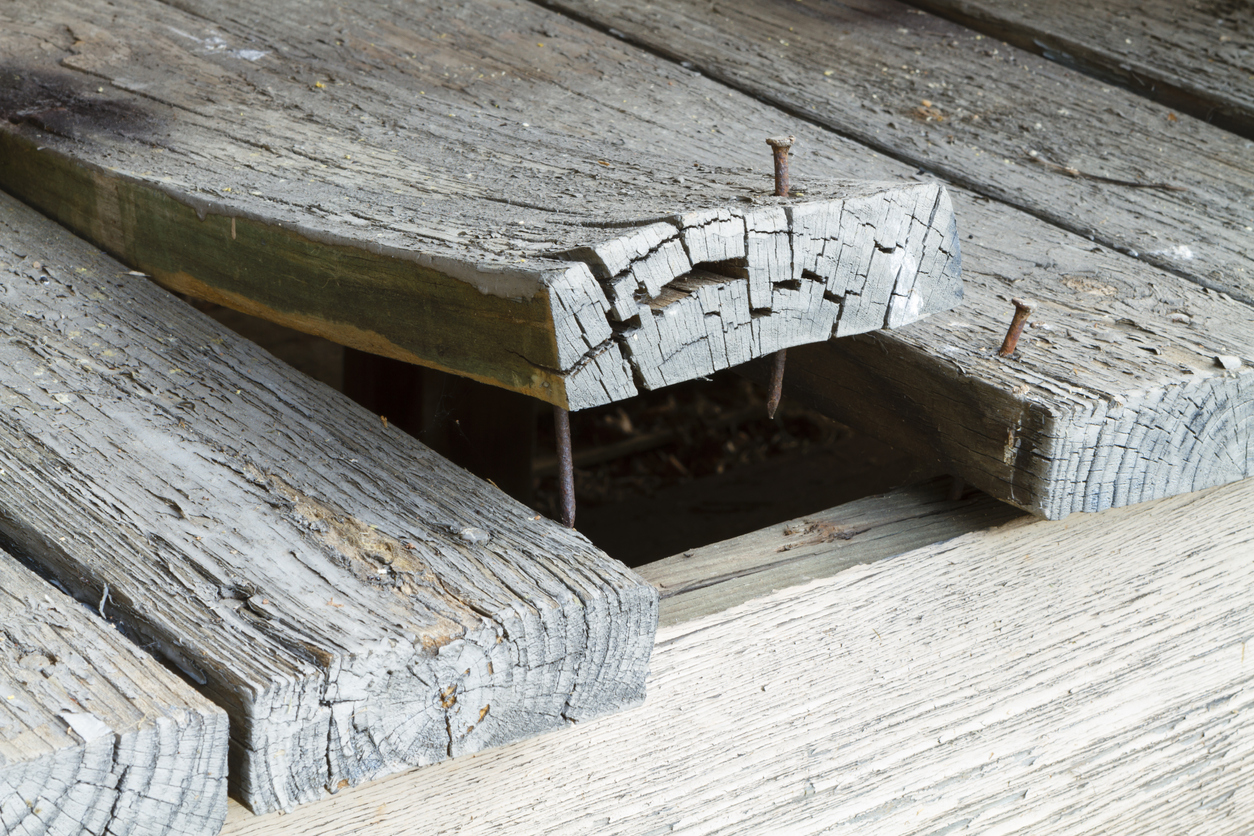
If it’s split, go ahead and replace
NADRA also advises that split wood on your deck be replaced. When you inspect your deck, check key components for splits or cracks, including the ledger board (which attaches the deck to the house), support posts, joists under the deck, deck boards, railings, and stairs.
RELATED: 23 Design Ideas to Make Your Deck a Destination
Use grills and other heat sources with care
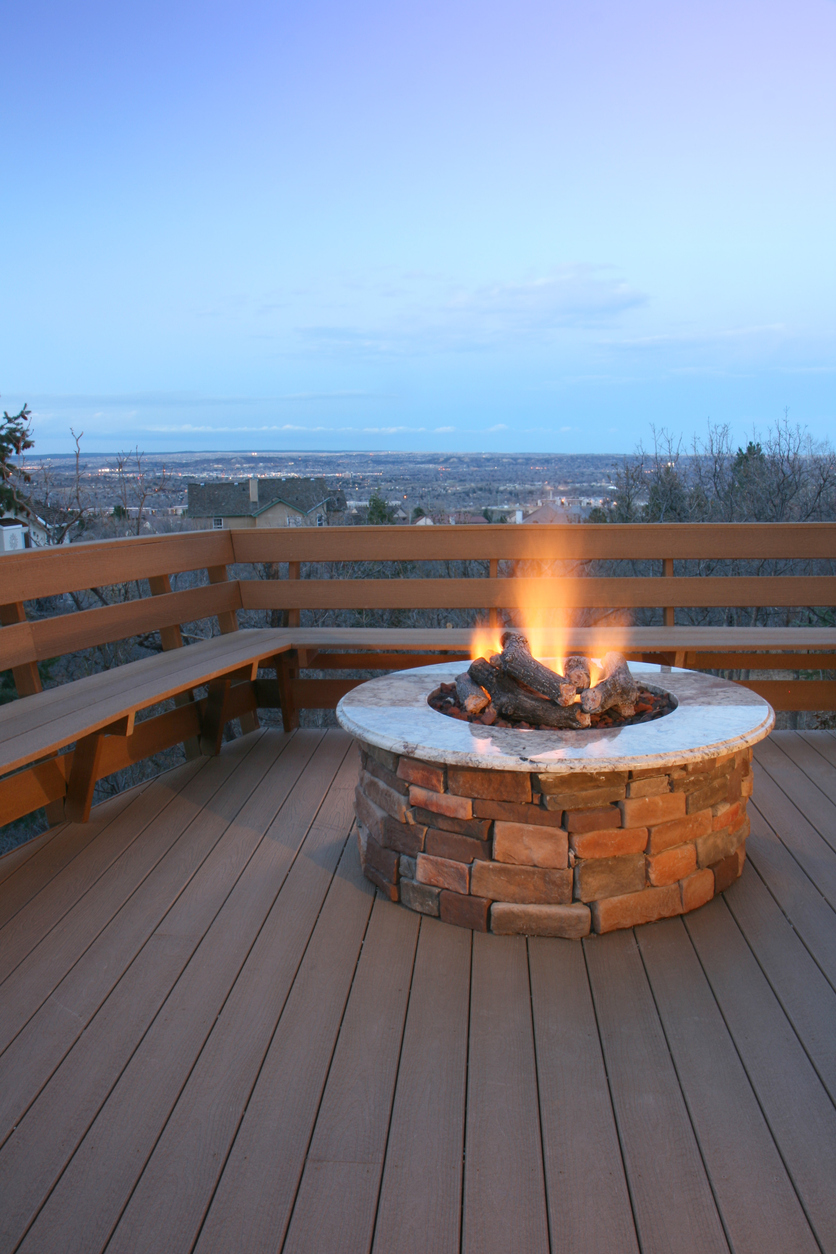
The deck is a great place for a grill, and heaters, chimineas, and fire pits can add cozy charm and warmth that make a deck even more appealing. But any one of these amenities can quickly become a hazard if not placed properly and used carefully. NADRA recommends keeping any source of heat, fire, or sparks well away from flammable surfaces, including the house and wood railings, and protecting the deck surface with a nonflammable pad when appropriate. Always follow the manufacturer’s directions when using grills and other heat-producing sources on or near your deck.
Are there trees around?
While trees in your backyard provide shade and privacy, they can also lead to damage or injury if their branches hang over your property. Check trees that overhang your deck to make sure there are no decaying branches that could fall and harm your deck (or your friends and family).
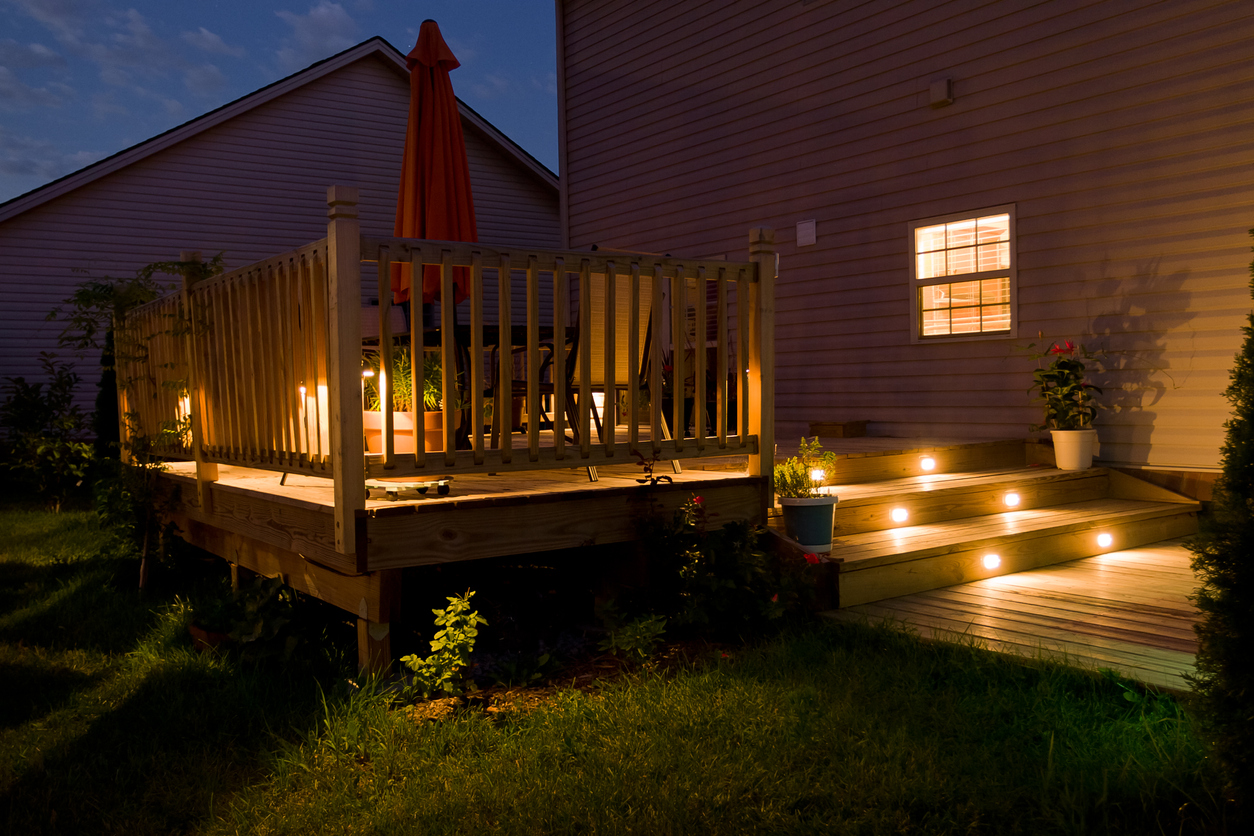
Light it up!
If you like to entertain at night, add decorative lighting to your deck to illuminate guests’ paths and prevent trips and falls. Home improvement retailer Lowe’s suggests using a variety of outdoor lighting to both beautify your deck and keep it safer, including rope lights, string lights, lanterns, post cap lights, step lights, and either low-voltage or solar landscape lights.
